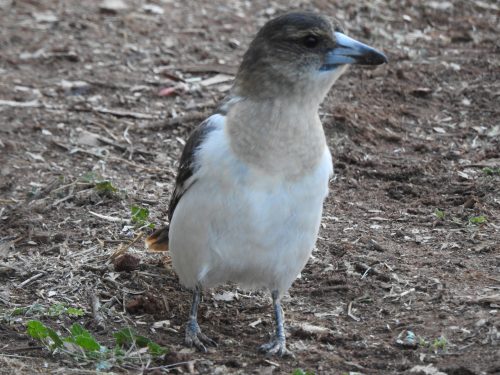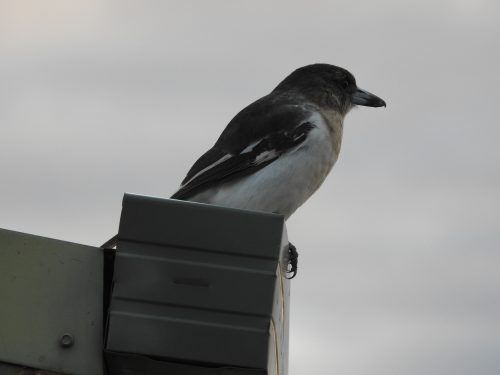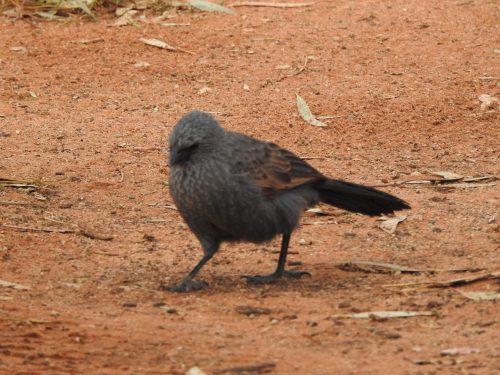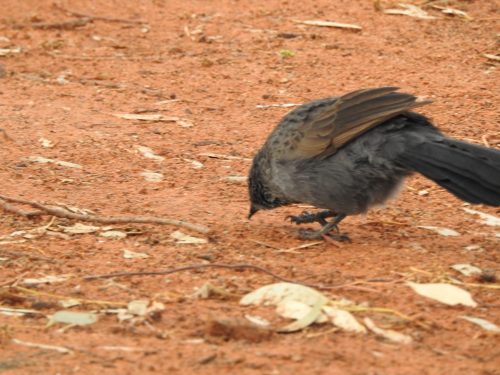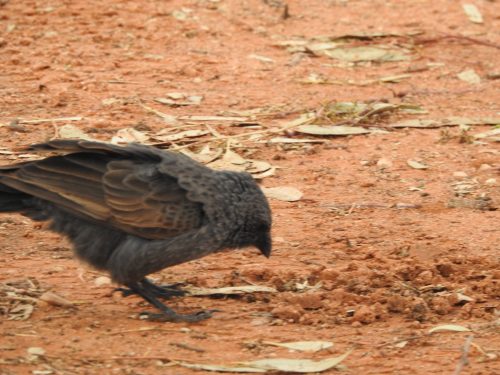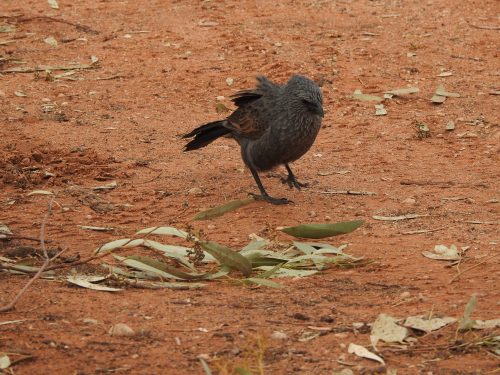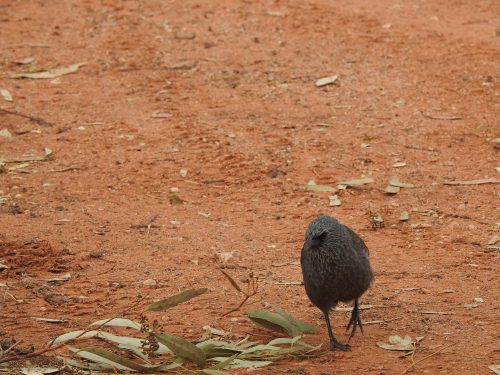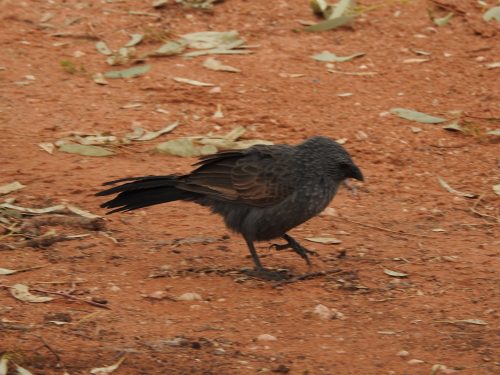Noisy Miner up close
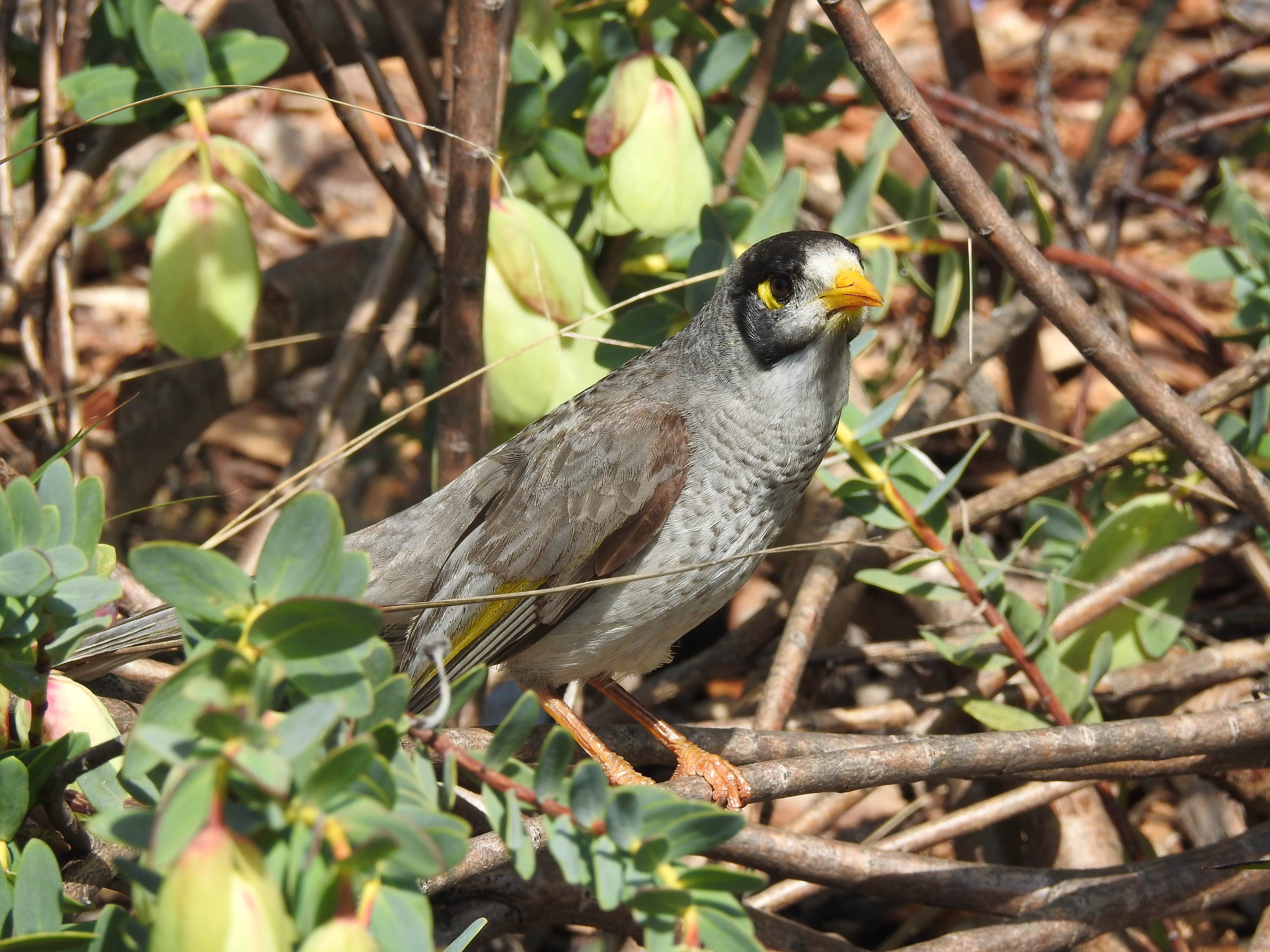
I am currently staying with my son and family in Sydney. Before arriving at his home I spent a few hours taking photographs and doing some birding in the Australian Botanic Gardens at Mount Annan. These beautiful gardens are situated in the south-west of Sydney. The plants are certainly worth seeing, especially in spring when so many are in full bloom. The birding is also very rewarding.
While I was taking plenty of photos of the many plants in flower (see photos below), I came across a very cooperative Noisy Miner. It was busily feeding on the nectar in one of the plants and was certainly unconcerned that I was barely a metre away, snapping away with my camera. It certainly makes bird photography easy when you get cooperative birds like this one. It is generally a very bold species, quite accustomed to being in contact with humans.
Food
The Noisy Miner is a member of the honeyeater family of birds. They usually feed on nectar which is generally in plentiful supply in our Australian native plants. They will also eat fruit and insects.
Habitat and distribution
Noisy Miners are a common species found throughout eastern Australia from northern Queensland through much of New South Wales, Victoria and South Australia. They are also present in Tasmania. They are found in open bushland, woodlands and forests. They have adapted well to life in parks and gardens in urban areas, often supplanting our smaller birds species through their aggressive nature. They are bold enough to take on much larger birds like magpies and ravens.
Further reading:
Rainbow Lorikeet in the “Moonlight”
Australian Museum article on the Noisy Miner
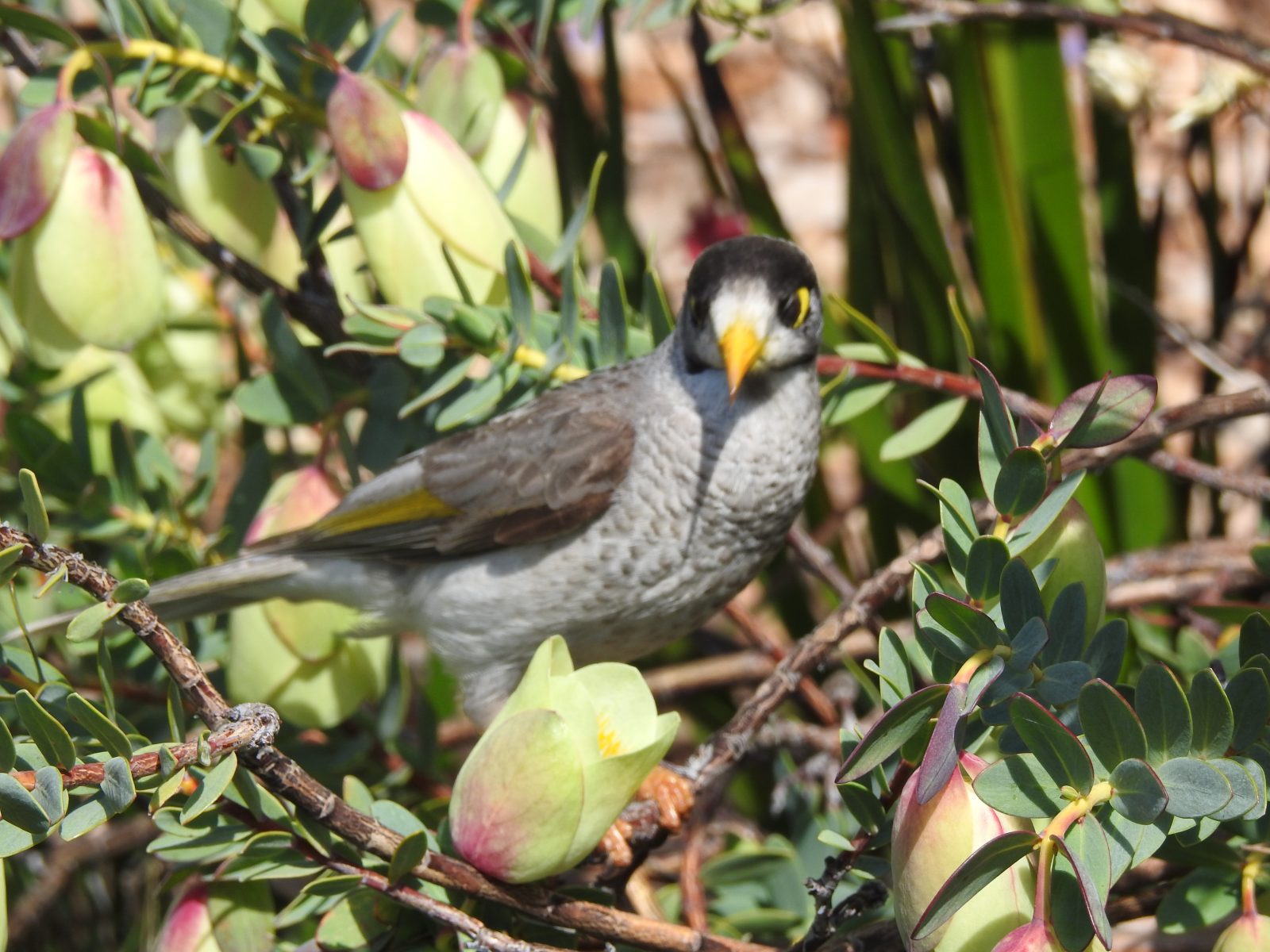
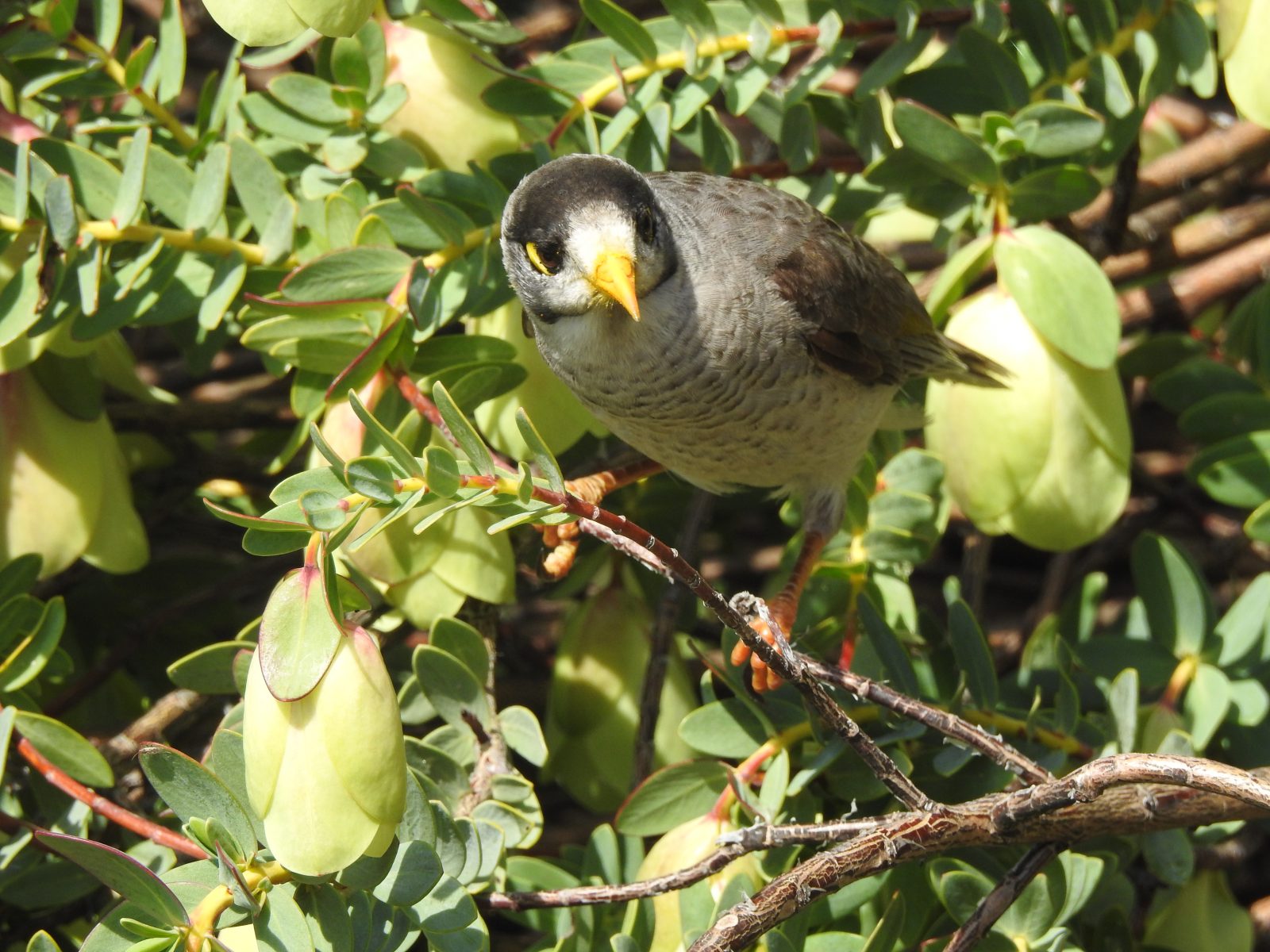
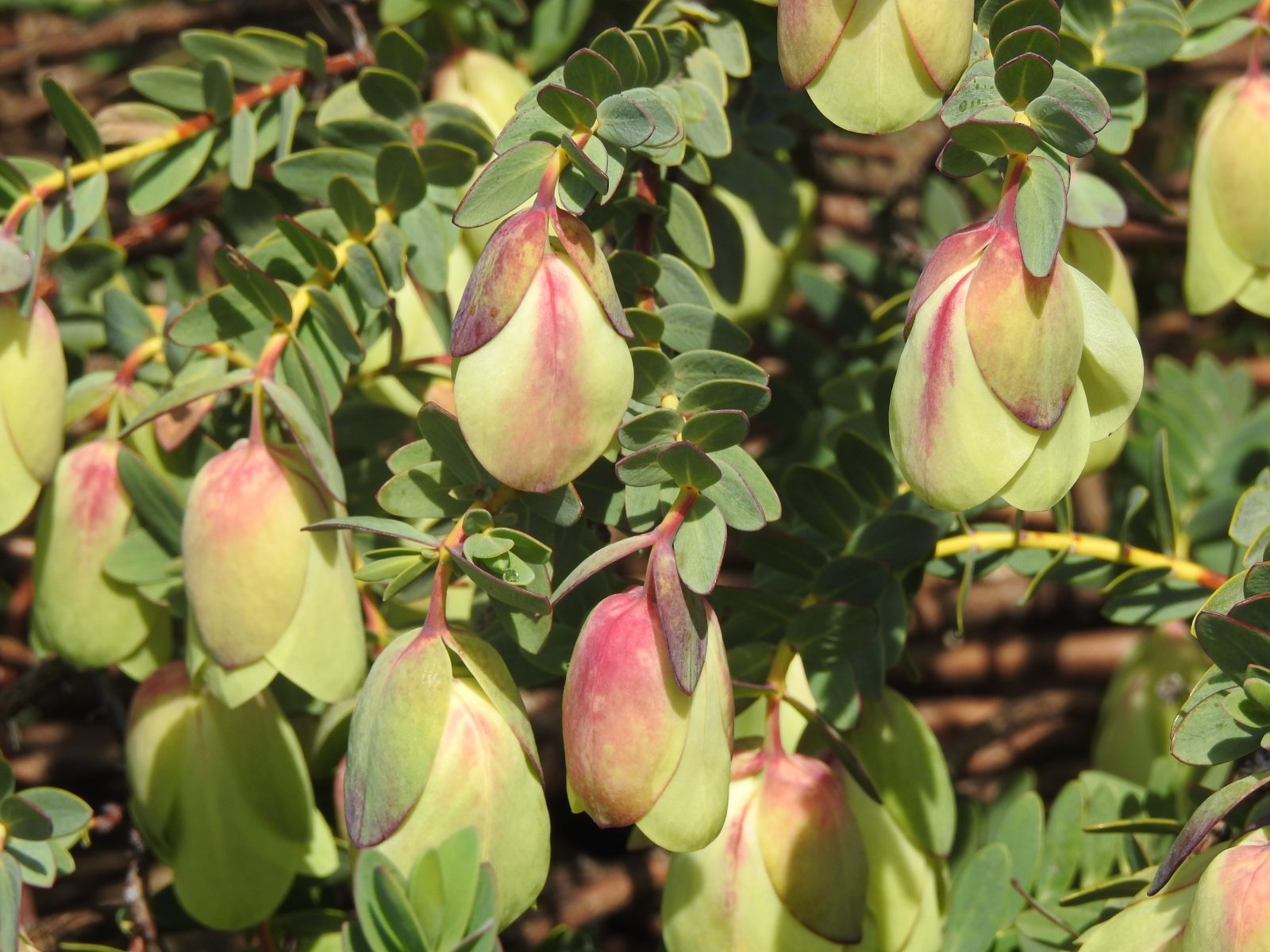
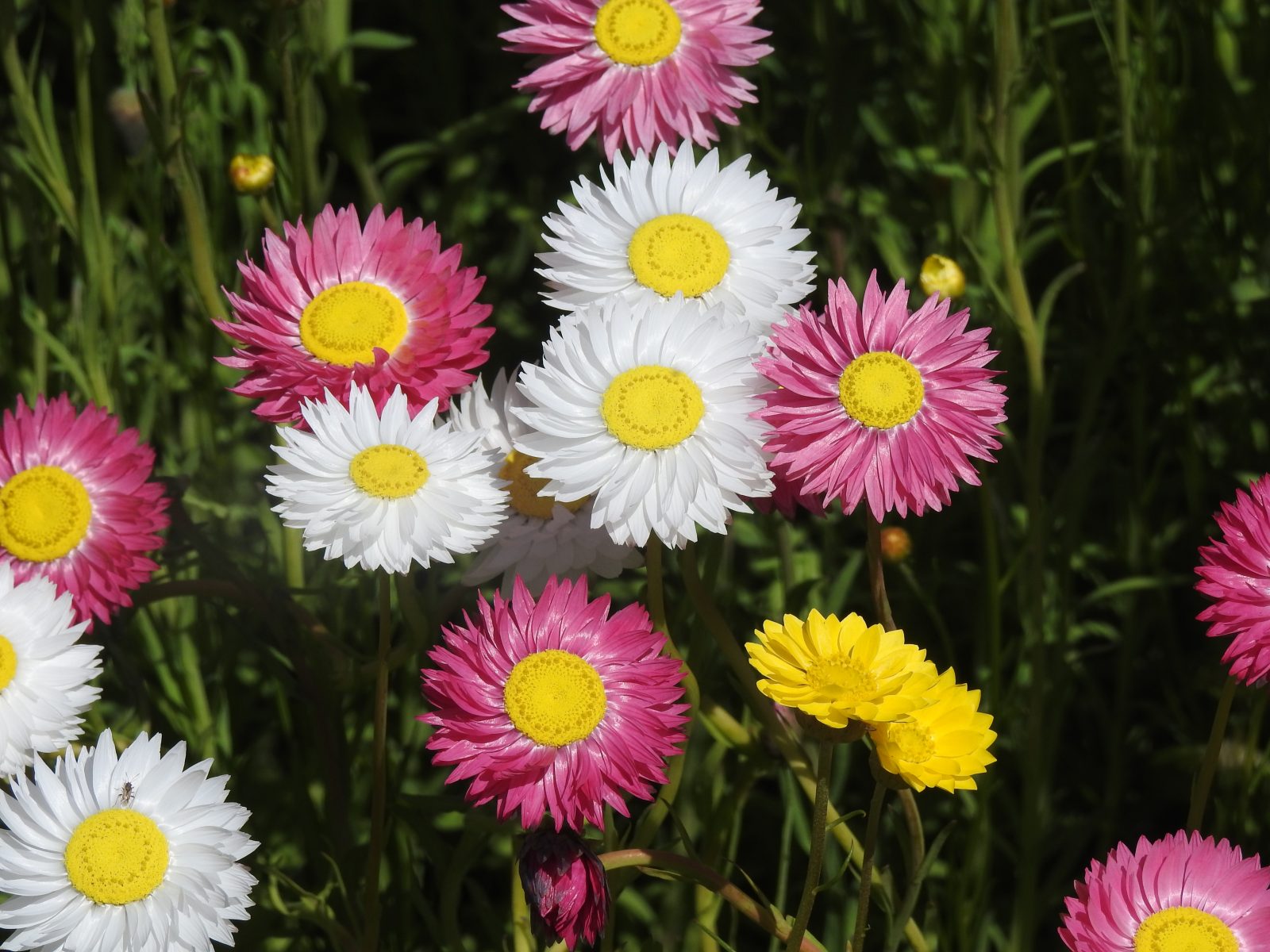
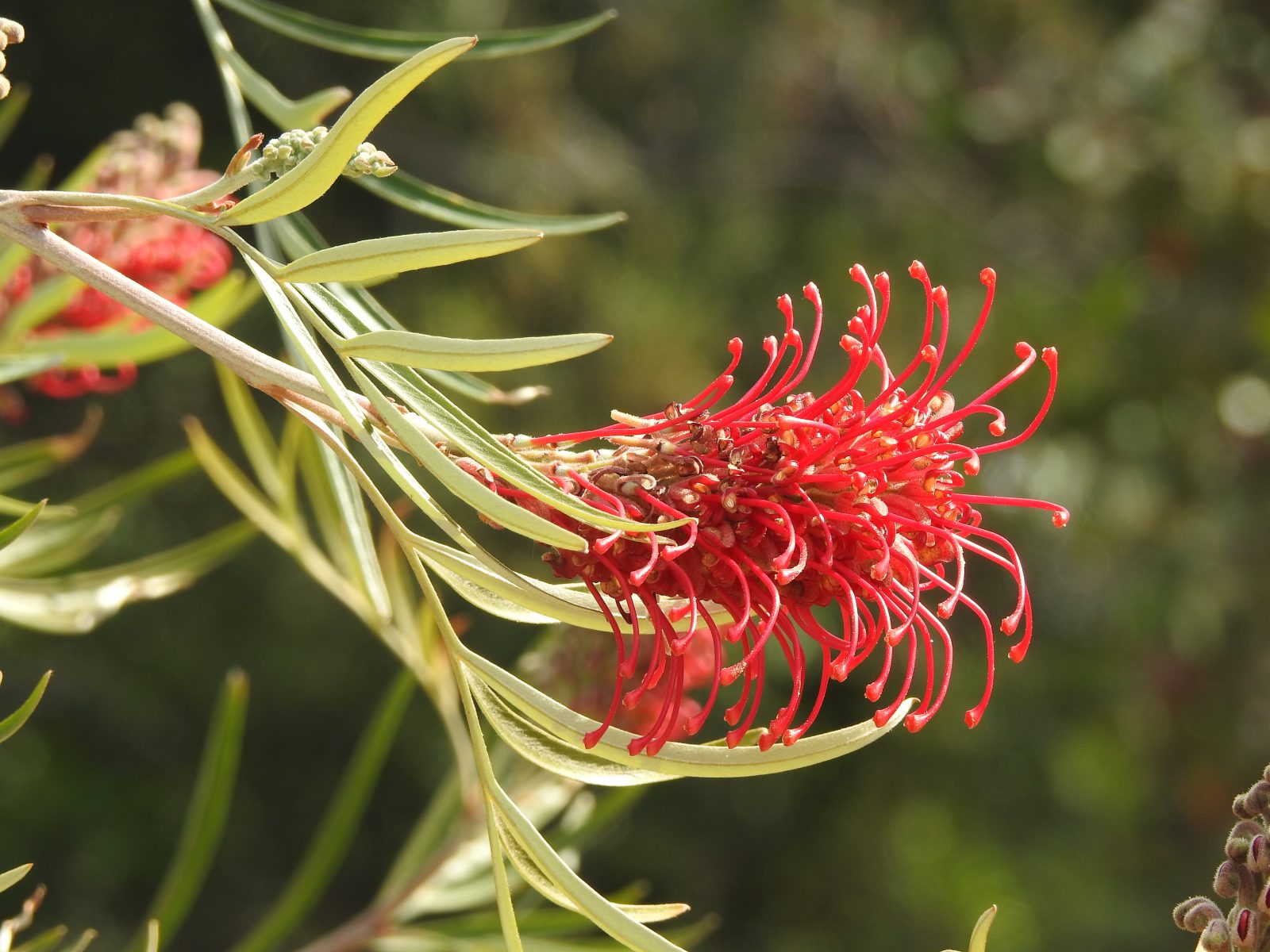
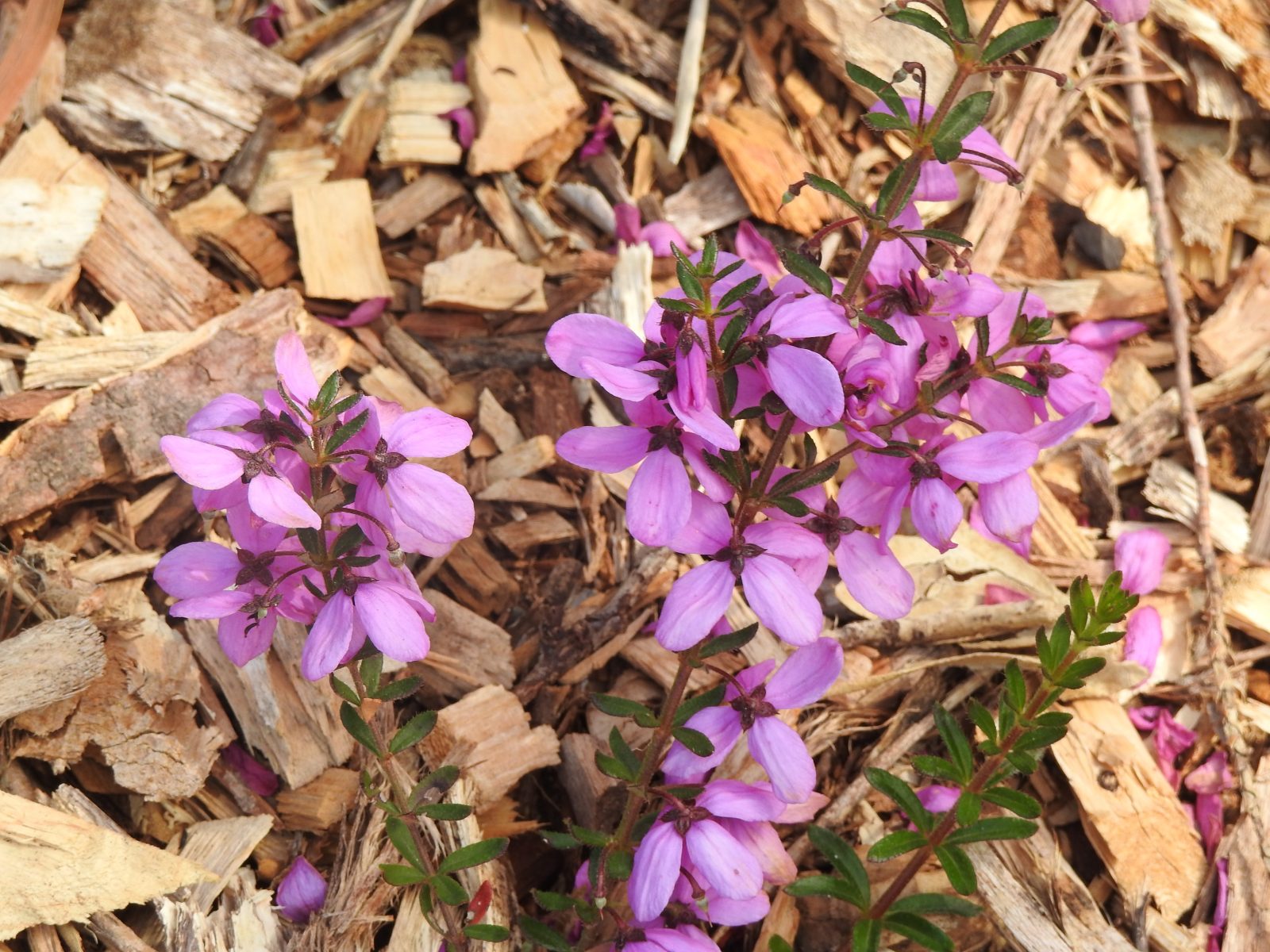
Strange Swamphen Behaviour
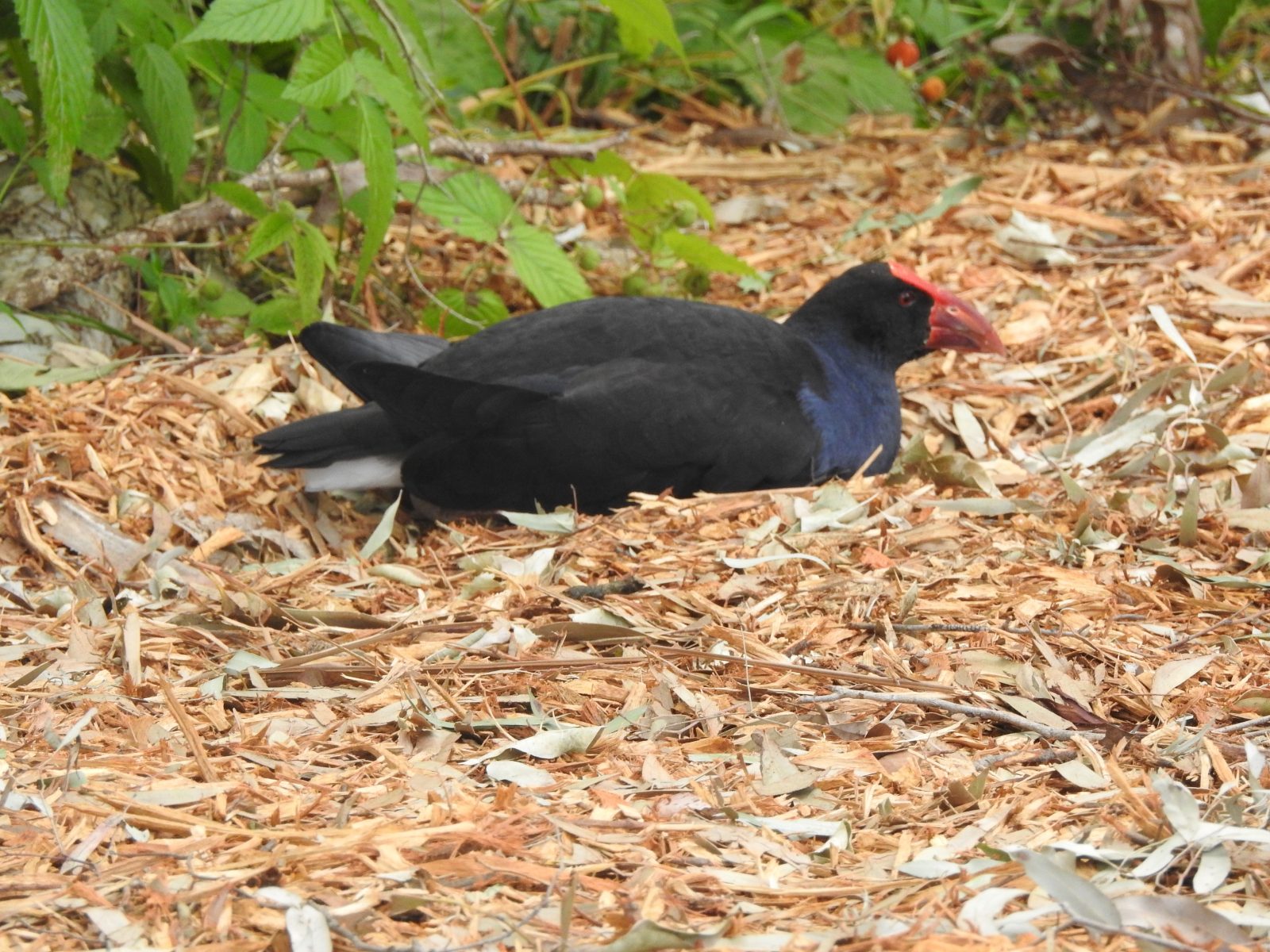
On my visit to the Australian Botanic Gardens in Mount Annan, SW Sydney last week I was surprised by the behaviour of the Purple Swamphen shown in the photo above. It didn’t seem to mind me walking past only a few metres away, nor was it concerned by the lady sitting at a picnic table about ten metres away.
I am not used to seeing Swamphens sitting down in this manner except when they are sitting to hatch their eggs. It almost looked as if it was in the process of actually hatching its eggs. Or was it just having a little rest? Normally, I am used to seeing Purple Swamphens strutting along elegantly on their long legs, rarely hurried and quite at ease with the world.
My error
There are two major flaws in my idea that it was preparing a nest, or sitting on eggs.
1. Swamphens usually make a nest in a stand of reeds, treading on them to make a flat platform on which they make a nest.
2. When I went past this spot some twenty minutes later, the bird had moved on.
I guess it really was just enjoying a quiet rest in a comfortable spot.
Further reading:
Article on the Birdlife Australia site
Article on the Australian Museum site
Purple swamphens at Sturt Reserve, Murray Bridge
Preening his feathers
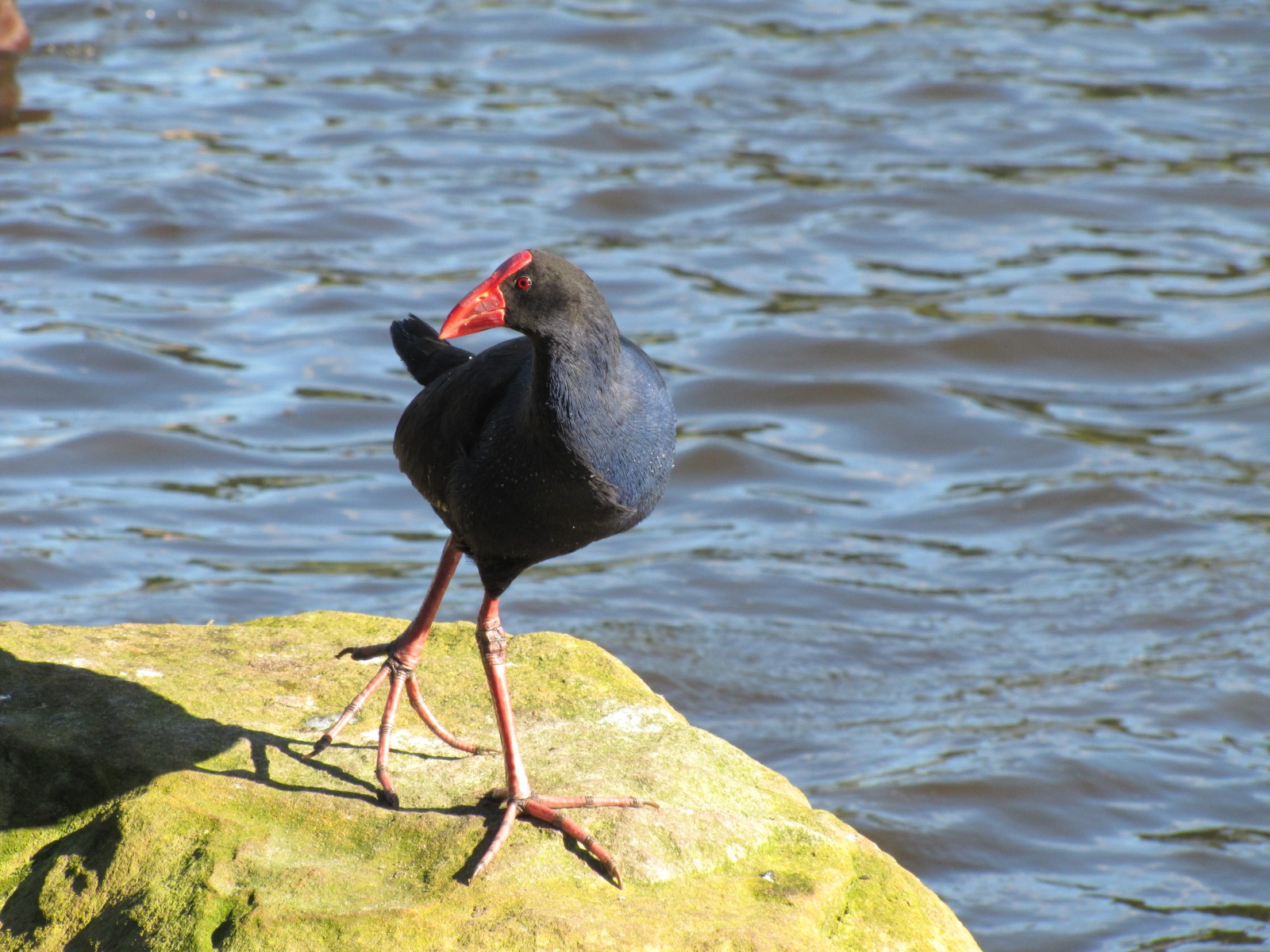
A raft of rosellas
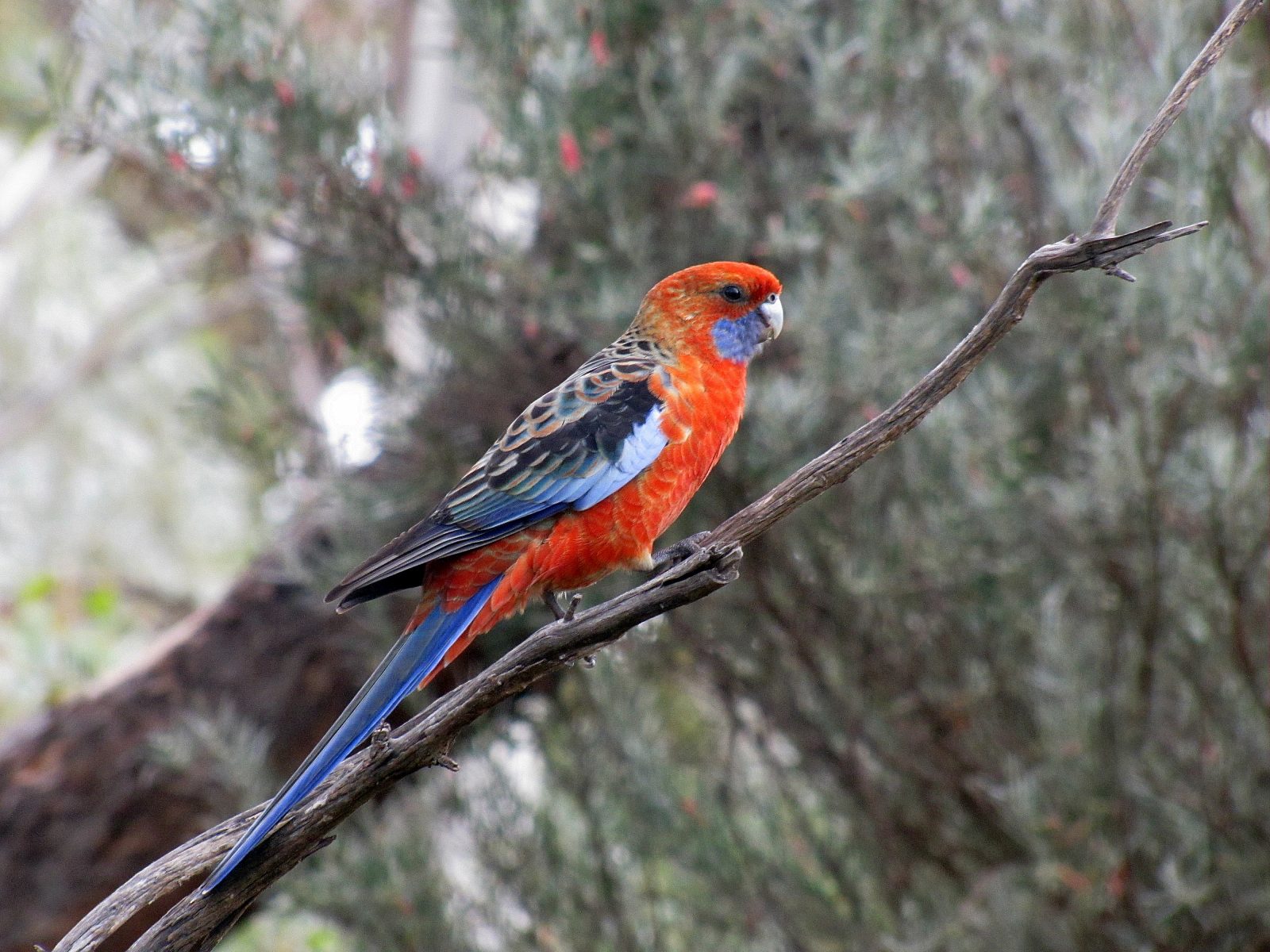
Earlier this week I spotted several birds coming in to land on the swimming pool cover in my garden. I keep the cover on the pool during the winter months to stop twigs from nearby trees falling into the water. The cover also stops excessive evaporation of the water.
During recent months, however, the winter rains have been quite good here where I live in Murray Bridge, South Australia. Other regions have been in serious drought conditions. Whenever it rains, small, shallow puddles of water gather on top of the pool cover. These pools are very inviting to the local birds and any others passing by.
When I stealthily crept closer to the pool I discovered three Adelaide Rosellas had landed on the pool cover and they were having a lovely time splashing around in the shallow pools of water. I crept quietly back into the house to get my camera, but by the time I came out again they were ready to leave. I didn’t get a chance to take some photos.
When I first moved to my home on the western edge of town over 30 years ago, I never recorded Adelaide Rosellas in my garden. Over the last ten to 15 years, their visits have become more and more frequent. Sometimes several months go by without sighting them, and then I will see some several months in a row. I guess you could say that their visits are somewhat sporadic. I certainly cannot call them a resident species like the Mallee Ringnecks which are always around somewhere on my five-acre block.
The Adelaide Rosella is a sub-species of the Crimson Rosella, common here in the southern parts of South Australia, as well as throughout the eastern states. I have also seen the Yellow Rosella nearby, another sub-species.
Because I didn’t get a chance to get a photo of the three visitors this week, I have used a photo of one taken some years ago (see above).
Immature Pied Butcherbird
In my last post, I wrote about the quiet day of birding I had at Round Hill Nature Reserve north-west of Lake Cargelligo. I was on my way to Sydney to visit family and made a little detour on the way. The birding was not up to my expectations but I enjoyed the visit anyway. It is certainly a better place to visit in the Spring and early Summer when more of the vegetation is in flower.
Mount Hope
After my visit to the reserve, I continued on towards Mount Hope, a small community of a few houses and a hotel. I stopped here for a few minutes to check out what birds were around but only managed to see seven species. I then drove south towards Hillston, stopping briefly at a roadside rest area. At that point, I had good views of Mallee Ringneck parrots and Blue Bonnet parrots as they flew across the road in front of my car.
Lachlan Valley Way
A little further along in the locality known as Wallenthery I turned east and took the Lachlan Valley Way back towards Lake Cargelligo. This road follows the Lachlan River. At one point I had good views of a Little Eagle and four Yellow-billed Spoonbills flying overhead. Nearby were several hundred Galahs (with a handful of Sulphur-crested Cockatoos keeping them company), a family of six White-winged Choughs and a Wedge-tail Eagle flying low. I also saw a solitary Emu, plenty of Apostlebirds and several small flocks of Blue Bonnet parrots.
At this point, the sun was setting quickly and the clouds were moving in making photography tricky. I only wished that I had more time to spend in this area to capture photos of some of the species mentioned and to seek out others that I may have missed.
Pied Butcherbird
When I returned to my cabin in the lovely caravan park, I was able to get a few shots of the resident Pied Butcherbird shown in the photos above and below. If you look closely at these photos, you will see that the bird has a brown throat and chest meaning that this is an immature bird. It hasn’t yet developed the black throat of the adult bird. If you click on this link, you will see a photo of an adult bird taken earlier in my trip.
This young bird was perched on the gutter of the cabin next door before it swooped down to catch a tasty dinner from the ground. The lawn in that part of the park had been disturbed earlier by one of the park gardeners weeding it. It was a fitting end to a good day’s birding despite some minor disappointments.
Good birding,
Trevor
Apostlebirds at Lake Cullulleraine
On my way to Sydney to visit family earlier this month, I stopped to have lunch by Lake Cullulleraine in the north-western part of Victoria. This lake is a picturesque spot about a half-hour drive west of Mildura. Many years ago, my wife and I had a wonderful week staying at the nearby caravan park. on this occasion, however, I only had about twenty minutes before heading off.
As I ate my lunch I could see and hear a small family of Apostlebirds feeding on the lawn about 50 metres away. They gradually worked their way along the edge of the lawn towards where I had parked the car. This was only a small family group of five individuals. I am used to seeing much larger groups of 10, 12 or even more.
As I packed up my lunch box and finished my cup of tea, the small group worked along the dirt track towards my car. I didn’t even have to use the zoom lens on my camera to get a series of close-up photos. They were quite content to come right up close to where I was standing. This is quite typical behaviour of this species. Whenever they are present in parks, gardens, caravan parks, picnic grounds and so forth, they become accustomed to people and will approach to within a metre or two. I have even had them jump up onto a picnic table while trying to eat my dinner. On that occasion, one bird came close to snatching my food. They certainly can be cheeky.
While some people might look down on this species as not being very colourful – they certainly are drab looking – they make up for it with their quirky and endearing behaviours. Except when they try to snatch your food.
Good birding,
Trevor
Further reading:
